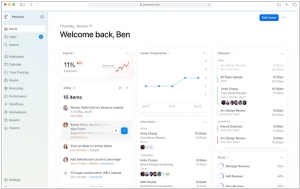Axigen vs Microsoft Exchange
October 12, 2024 | Author: Adam Levine
3★
Mail server software, calendaring & collaboration. Self hosted, all-in-one email server built for speed & security. Runs on Linux, Windows & Docker.
20★
Microsoft Exchange Server is the server side of a client–server, collaborative application product developed by Microsoft. Exchange's major features consist of electronic mail, calendaring, contacts and tasks; support for mobile and web-based access to information; and support for data storage.
See also:
Top 10 Email Servers for business
Top 10 Email Servers for business
Axigen and Microsoft Exchange are both email server solutions, but comparing them is rather like comparing a charming little bistro run by a passionate chef with a sprawling, labyrinthine hotel chain. Axigen, the boutique option, is crafted by Axigen Messaging, a smaller software firm with a distinct focus on email and communication. Microsoft, meanwhile, is a colossus, offering Exchange as part of a sprawling empire of digital wizardry. Naturally, this comes with all the pomp and circumstance of extensive technical support, updates, patches and perhaps an entire team of people ready to remind you just how indispensable they really are.
When it comes to deployment, the differences are as stark as between staying at home in cozy slippers versus booking a first-class flight to a cloud-based paradise. Microsoft Exchange offers both options, either in the cloud as part of the grand Office 365 suite, or as a self-contained on-premises solution. Axigen, meanwhile, prefers to keep things mostly on-premises, though it dips a cautious toe into the cloud with Axigen X2. Both offer the usual array of features—email, calendars, tasks—but Microsoft has integrated so tightly with its other products (Outlook, Teams, SharePoint) that it’s practically offering you a whole digital kingdom, while Axigen provides a more modest, if perfectly respectable, set of features, tailored to those who might prefer not to deal with the complexities of royalty.
As for performance and licensing, it’s a bit like comparing a rocket to a well-tuned scooter. Microsoft Exchange is built for speed and scale, capable of managing email traffic from thousands of users across vast digital landscapes. Axigen, on the other hand, is more suitable for smaller journeys—ideal for medium-sized companies that don’t need an email empire. Microsoft’s licensing model, naturally, resembles a riddle wrapped in an enigma, requiring a degree in mathematics to decipher, while Axigen’s approach is refreshingly simple, designed to ensure you spend more time emailing and less time scratching your head over how many licenses you need.
See also: Top 10 Email Servers
When it comes to deployment, the differences are as stark as between staying at home in cozy slippers versus booking a first-class flight to a cloud-based paradise. Microsoft Exchange offers both options, either in the cloud as part of the grand Office 365 suite, or as a self-contained on-premises solution. Axigen, meanwhile, prefers to keep things mostly on-premises, though it dips a cautious toe into the cloud with Axigen X2. Both offer the usual array of features—email, calendars, tasks—but Microsoft has integrated so tightly with its other products (Outlook, Teams, SharePoint) that it’s practically offering you a whole digital kingdom, while Axigen provides a more modest, if perfectly respectable, set of features, tailored to those who might prefer not to deal with the complexities of royalty.
As for performance and licensing, it’s a bit like comparing a rocket to a well-tuned scooter. Microsoft Exchange is built for speed and scale, capable of managing email traffic from thousands of users across vast digital landscapes. Axigen, on the other hand, is more suitable for smaller journeys—ideal for medium-sized companies that don’t need an email empire. Microsoft’s licensing model, naturally, resembles a riddle wrapped in an enigma, requiring a degree in mathematics to decipher, while Axigen’s approach is refreshingly simple, designed to ensure you spend more time emailing and less time scratching your head over how many licenses you need.
See also: Top 10 Email Servers





